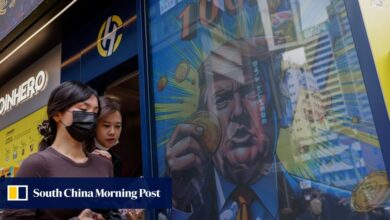SEC revokes controversial rule preventing banks from custodying crypto

- The SEC revoked the controversial SAB 121 rule, which prevented banks and financial institutions from custodying crypto.
- The regulator introduced a new bulletin known as SAB 122, which allows financial institutions to manage clients’ crypto holdings.
- SAB 122 adds to the list of reforms being introduced by President Donald Trump’s administration.
The Securities & Exchange Commission (SEC) revoked the controversial Staff Accounting Bulletin (SAB 121) on Thursday through the introduction of SAB 122, which permits financial institutions to custody digital assets.
SEC revokes controversial SAB 121, says banks can now custody crypto
The US SEC has withdrawn its contentious crypto accounting guidance, which ordered financial institutions to add crypto assets as liabilities on their balance sheets.
In a public statement on Thursday, the regulator’s new bulletin SAB 122 revoked SAB 121, ending the controversy surrounding it.
“This staff accounting bulletin (“SAB”) rescinds the interpretive guidance included in Section FF of Topic 5 in the Staff Accounting Bulletin Series entitled Accounting for Obligations to Safeguard Crypto-Assets an Entity Holds for its Platform Users (“Topic 5.FF”),” SAB 122 stated.
The SEC also mentioned that entities must disclose risks and obligations associated with safeguarding crypto assets.
The decision marks another win for the crypto industry following recent changes in the SEC’s leadership after Commissioner Mark Uyeda took on the role of acting Chair. Uyeda’s leadership in the past few days has been starkly different from that of former Chair Gary Gensler’s administration, which targeted harsh regulations toward the crypto industry.
The move signals a potential shift in the SEC’s regulatory approach to cryptocurrency oversight.
Originally implemented in 2022, SAB 121 mandated that banks treat customer crypto holdings as liabilities.
The bulletin stirred significant pushback from Republican and Democrat lawmakers and the cryptocurrency industry, leading to several debates around its continuity.
Members of the Congress moved to repeal the complicated bulletin, resulting in a bipartisan vote that supported its cancellation.
However, former President Joe Biden vetoed the bipartisan decision, stating that it provided proper guidance for accounting obligations. The veto halted Congress’s efforts to overturn the SEC’s directive, leaving many in the crypto industry frustrated and seeking alternative solutions.
Several key crypto figures celebrated the change, expressing gratitude to President Donald Trump’s newly inaugurated administration.
Trump has already fulfilled several promises toward crypto in his first week as president, including denouncing de-banking by claiming that America would be the crypto capital of the world.
He recently signed an executive order establishing a new unit called the Presidential Working Group on Digital Assets Markets. The unit is saddled with the responsibility of creating a framework that addresses the digital asset regulatory landscape.
It will also help in the creation of a strategic national digital asset stockpile, viewed by many as a step toward a Bitcoin Strategic Reserve (BSR).
Bitcoin, altcoins, stablecoins FAQs
Bitcoin is the largest cryptocurrency by market capitalization, a virtual currency designed to serve as money. This form of payment cannot be controlled by any one person, group, or entity, which eliminates the need for third-party participation during financial transactions.
Altcoins are any cryptocurrency apart from Bitcoin, but some also regard Ethereum as a non-altcoin because it is from these two cryptocurrencies that forking happens. If this is true, then Litecoin is the first altcoin, forked from the Bitcoin protocol and, therefore, an “improved” version of it.
Stablecoins are cryptocurrencies designed to have a stable price, with their value backed by a reserve of the asset it represents. To achieve this, the value of any one stablecoin is pegged to a commodity or financial instrument, such as the US Dollar (USD), with its supply regulated by an algorithm or demand. The main goal of stablecoins is to provide an on/off-ramp for investors willing to trade and invest in cryptocurrencies. Stablecoins also allow investors to store value since cryptocurrencies, in general, are subject to volatility.
Bitcoin dominance is the ratio of Bitcoin’s market capitalization to the total market capitalization of all cryptocurrencies combined. It provides a clear picture of Bitcoin’s interest among investors. A high BTC dominance typically happens before and during a bull run, in which investors resort to investing in relatively stable and high market capitalization cryptocurrency like Bitcoin. A drop in BTC dominance usually means that investors are moving their capital and/or profits to altcoins in a quest for higher returns, which usually triggers an explosion of altcoin rallies.
Source link



